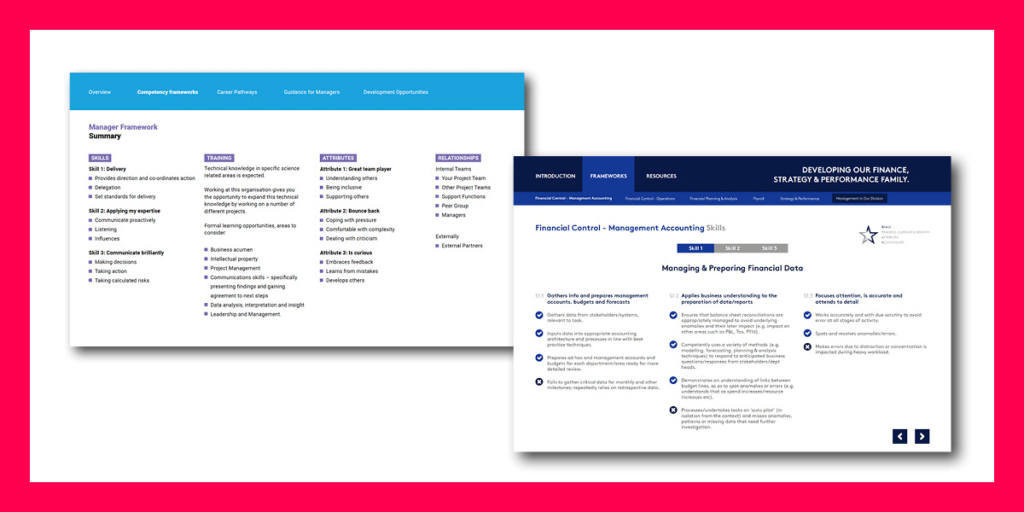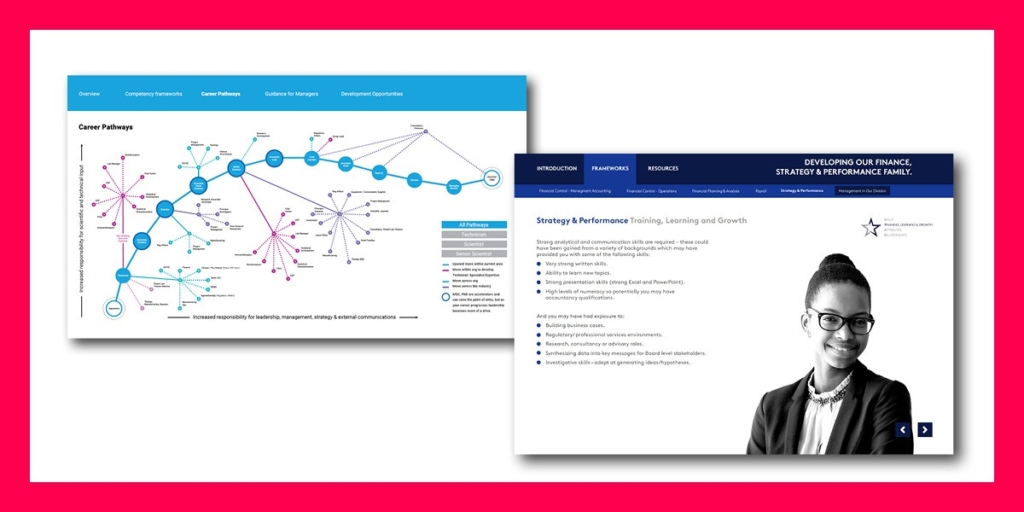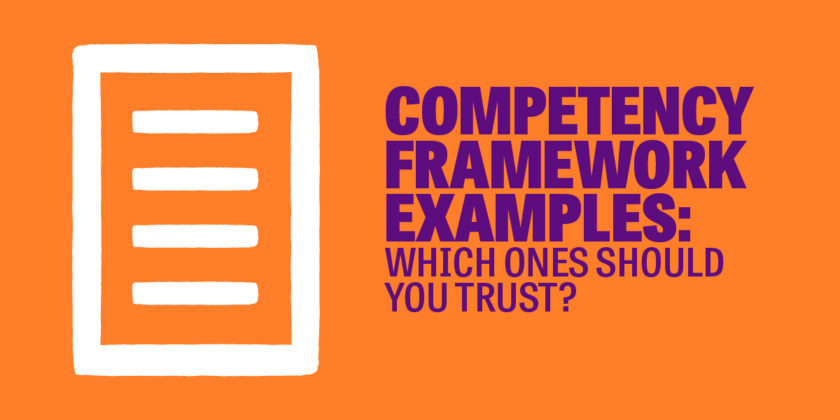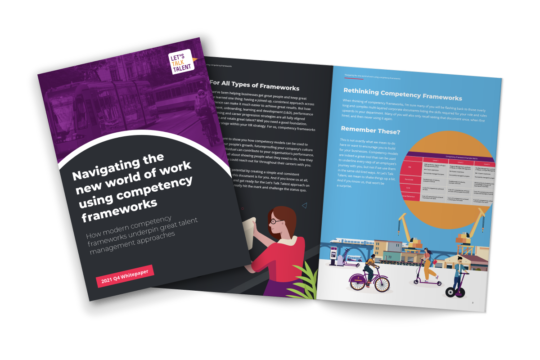Finding the right template for your business in a sea of static, corporate grids
Competency frameworks are highly effective tools that provide employees with the clarity they need to do their job well, and progress within your organisation. When designed right, they become the lynchpin that underlines your entire HR strategy and links every stage of your employee experience. They also have a role to play in increasing individual and organisational performance, motivation levels and retention rates. If this doesn’t sound like the competency frameworks you’ve seen so far, it’s probably because most are created based on rehashed, linear and old-fashioned documents that don’t quite hit the mark.
Many of the examples available out there aren’t actually all that useful, which goes a long way towards explaining why frameworks have been set aside over the past few years.
So how can you pick a model that will work for your organisation in a sea of beige ineffective grids? Which template could help you achieve the results you are looking for?
At Let’s Talk Talent, we’ve made it easy for you by reviewing a few typical competency models and highlighting some key success factors.
In this article, you will discover:
What to avoid in a competency framework example

We’ve all seen or used something similar to the above grid at some point in our professional lives. Why is it so popular, yet so ineffective?
What to Avoid: competency templates full of generic corporate jargon
Competency frameworks shouldn’t be generic grids. In order to be successful, they should reflect your internal culture and mirror your cultural DNA. Their role is to show employees what it’s like to work for you, and clearly illustrate how it differs from working for one of your competitors.
If your people do not see themselves reflected in the document (hence the importance of using inclusive language), adhesion will prove much harder. Make sure that anyone reading your competency frameworks recognises that they were created by, and for you.
What to avoid: vague competency framework examples
After going through the framework above, would you understand how to do your job well? Most models focus on telling staff what to do to move from point A to point B. We believe competency frameworks should go further and actually inspire people. Don’t just give them a list of skills to interpret: show them exactly what good looks like for any specific role.
What would be an example of a great performance? Give as much clarity as you can so employees know how to go about doing the job well. Provide both good and bad scenarios. And don’t forget that it’s not just about the ‘what’, it’s also about the ‘how’.
The traits, behaviours and attributes you expect your employees to display are just as important as the knowledge or experience you expect them to bring to the table.
What to avoid: complex competency grids
The main objective of competency frameworks is to provide clarity. Anything complex, multitiered or multi-layered should be avoided. Check the final product provides clear answers to the following key questions:
- What do I need to do to be successful within this organisation?
- How do I need to do it?
- How do I navigate my career here?
And don’t just take your own word for it. Test drive your competency frameworks. Throughout the design process, organise focus groups, put your working documents in front of people and find out if they need to be adapted. Effective tools can only be developed through a collaborative, iterative process.
Now that we’ve had a look at the worst, let’s have a look at what works.
What to look for in an effective competency framework

Look for: competency framework examples that show a defined purpose
To achieve results, you’ll need to know what kind of results you’re hoping for. What’s the problem you are trying to solve? What’s your big exam question? Figuring this out from the start will ensure you weave that objective into everything you do. For example, an organisation looking to improve its internal culture to focus on equality, diversity and inclusion (ED&I) should start the design process by having discussions with various members of its communities.
The resulting tool should mirror your cultural DNA, whilst being closely linked to your business purpose. As a test, have a look at the above framework and try to find out which big exam question it is trying to answer.
Look for: aspirational competency grids
Ultimately, competency frameworks are about driving high performance. As such, they should demonstrate how to go further than just ‘getting the job done’. They should state how employees can strive for more, show initiative and contribute to organisational goals through the skills, traits and behaviours they bring to the table. After all, the main objective of competency frameworks is to foster and develop high performance, both from an individual and business point of view.
Look for: competency frameworks with a clear career map
Competency frameworks aren’t just about the here and now. They constitute a stepping stone for career progression. By answering the question ‘How can I navigate my career here?’, they focus your people’s gaze and allow staff to cut through the noise and select the opportunity that is most suited to their skills and ambitions.
The above template, as an example, is part of a series of three frameworks, each specific to a broad job level: employee, management, leadership. Producing the frameworks and rolling them out to the organisation allowed everyone to gain a clear understanding of what was needed to progress to the next level, thus focusing less on the roles and more on the possibilities.
If you’d like to know more about how to use competency frameworks to help career development, have a read of our blog article.

What we can learn from these competency framework examples
Competency frameworks can be powerful tools to generate high performance, motivation and staff retention. However, to achieve these results, you’ll need to do much more than go through the motions of filling in grid templates. You’ll need to break the mould. Make sure you design frameworks that represent your organisation and the people in it, and are fluid, dynamic and also aspirational.
Most importantly, don’t be afraid to modify them. Your business is an ecosystem, constantly adapting to many factors. Competency frameworks should follow suit. Test them regularly, check to see if they still resonate with staff, and iterate often.
When done right, competency frameworks can unlock every single aspect of your talent management strategy, from recruitment to retention.
If you’d like to know more about competency frameworks:
- Download our free competency frameworks whitepaper
- Have a look at our competency framework services page
- Book a call with us to discuss your challenges
Related competency frameworks resources:
- Download our free competency frameworks whitepaper [Free whitepaper]
- How to develop effective competency frameworks [Blog post]
- Why your competency frameworks aren’t generating high performance [Blog post]
- Re-imagining competency frameworks for the modern workforce [Blog post]
- How to use competency frameworks to help career development [Blog post]
- The big list of HR Definitions [Free Resource]

